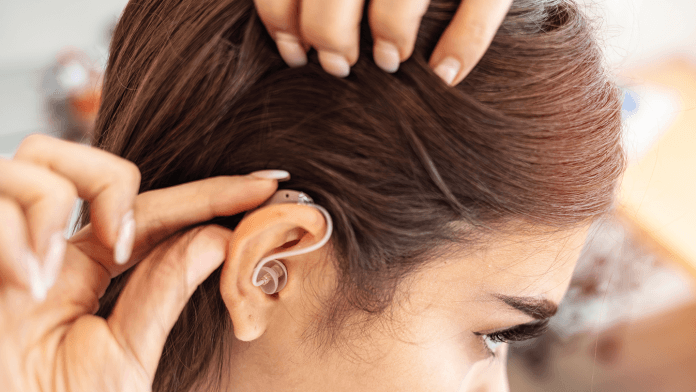Hearing loss is a common and often overlooked health concern affecting millions of people worldwide. For many individuals, the cost of hearing aids has been a significant barrier to accessing essential auditory assistance.
However, recent advancements in technology have led to a transformative change in the hearing aid industry, making affordable and effective solutions more accessible than ever before.
In this article, we explore the impact of technology on affordable hearing aids and the innovations that are making a difference in the lives of those with hearing impairment.
Table of Contents
The Challenge of Cost: The Need for Cheap Hearing Aids
For years, the high cost of hearing aids has been a stumbling block for individuals seeking help for their hearing loss.
Traditional hearing aids often carried a hefty price tag, making them out of reach for many people, particularly those without insurance coverage for hearing-related issues. As a result, a significant portion of the population was left struggling to cope with their hearing difficulties, negatively impacting their quality of life.
Technological Innovations Driving Affordability
Fortunately, advancements in technology have played a pivotal role in driving down the cost of hearing aids. Several key technological innovations have contributed to this positive shift, making cheap hearing aids a reality for those in need.
Miniaturization and Digitalization
One of the significant cost factors in traditional hearing aids was the complex and bulky design. However, technological breakthroughs in miniaturization have led to the development of smaller and more discreet hearing aid models. Modern digital hearing aids can now fit comfortably inside the ear canal, reducing production costs and making them more affordable for consumers.
Programmability and Personalization
Digital hearing aids come equipped with advanced signal processing capabilities, allowing for precise customization to an individual’s specific hearing needs. Rather than relying on generic settings, modern hearing aids can be programmed to amplify certain frequencies or suppress background noise, providing a tailored listening experience.
This adaptability enhances user satisfaction and ensures that people get the maximum benefit from their hearing aids, eliminating the need for expensive multiple adjustments.
Bluetooth and Connectivity
The integration of Bluetooth technology into hearing aids has been a game-changer. Bluetooth-enabled hearing aids can connect wirelessly to various devices, such as smartphones, TVs, and computers. This connectivity not only enhances the user’s experience but also eliminates the need for separate streaming accessories, reducing costs for consumers.
The Role of Artificial Intelligence (AI)
Artificial Intelligence (AI) has been another significant driver in the quest for cheap hearing aids. AI-powered hearing aids can analyze and learn from a user’s listening preferences and environments, adjusting settings in real-time to optimize sound quality. This adaptive approach eliminates the need for regular visits to an audiologist for adjustments, saving both time and money for users.
Self-Fitting Capabilities
AI has enabled the development of self-fitting hearing aids, which are pre-programmed to adjust automatically to a user’s hearing profile. Through a user-friendly smartphone app, individuals can perform a hearing test and customize their hearing aid settings, avoiding the expense of audiologist consultations.
Affordable Hearing Aid Apps
In addition to self-fitting capabilities, mobile apps have emerged as cost-effective solutions for those with mild hearing loss.
Hearing aid apps work with standard headphones or earbuds, turning smartphones into personalized amplification devices. While not suitable for severe hearing loss, these apps have significantly lowered the barrier to entry for those with mild to moderate hearing impairments.
Invisible Hearing Aids
Invisible hearing aids, also known as “in-the-canal” or “completely-in-canal” devices, fit deep inside the ear canal, making them virtually undetectable. This discreet design has contributed to greater social acceptance and encouraged more individuals to embrace hearing aid technology, breaking down the barriers of stigma and cost.
The Future of Affordable Hearing Aids
The impact of technology on affordable hearing aids has been profound, transforming the hearing aid industry and the lives of millions of individuals worldwide. As technology continues to evolve, we can expect further innovations that drive down costs and improve accessibility.
Advancements in Battery Technology
The longevity of hearing aid batteries has been a recurring expense for users. However, advancements in battery technology, such as rechargeable batteries with longer lifespans, are poised to reduce the financial burden of ongoing battery replacements, making hearing aids even more cost-effective.
Continued AI Integration
AI’s integration into hearing aids will continue to improve personalized sound experiences, further reducing the need for manual adjustments and audiologist visits. This trend will ensure that users can rely on their hearing aids for extended periods without incurring additional costs.
Increased Market Competition
The growing demand for affordable hearing aids is likely to attract more companies to enter the market. Increased competition can lead to price reductions, providing consumers with a broader range of options to choose from, thus fostering an even more accessible environment for cheap hearing aids.
Final Thought
The impact of technology on affordable hearing aids cannot be understated. Technological innovations, including miniaturization, digitalization, AI integration, and Bluetooth connectivity, have played pivotal roles in making cheap hearing aids a reality for many individuals with hearing impairments.
These advancements have not only reduced costs but have also shattered the stigma associated with traditional hearing aids.
As we look to the future, continued innovation and competition hold the promise of even greater accessibility and affordability, ensuring that more individuals can benefit from these life-changing devices.








